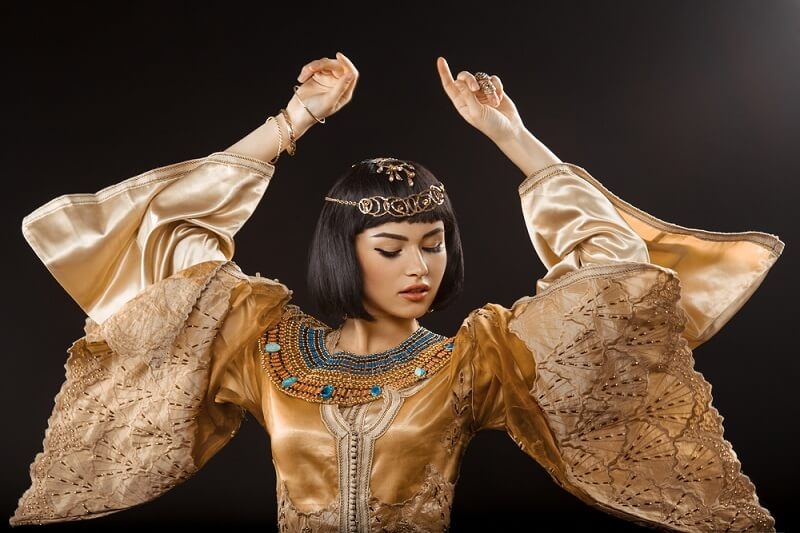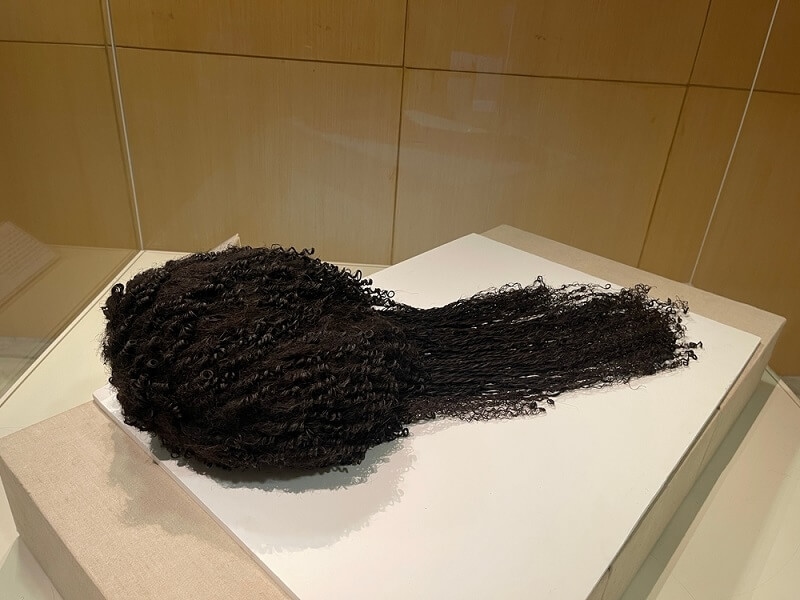
You know, in ancient Egypt, hair was not just something people brushed in the morning and forgot about. It carried deep meaningm the kind that could reveal your identity, your social standing, and even your spiritual beliefs without saying a word. Understanding the Ancient Egyptian hairstyles meaning opens up a whole new window into their culture. Every strand told a story, and this wasn’t just fashion, it was faith, status, and tradition woven together. From the sacred braids to elaborate wigs, each style reflected Egyptian hair symbolism that connected beauty with power, purity, and divine protection.
Egyptians genuinely believed hair carried meaning. It wasn’t just fashion. Some thought it was tied to your life force, almost like a part of your soul. Shaving it could mean purity. Styling it in certain royal patterns could mean authority.
And yes, they even believed hair could have magical power. That’s why in some tombs, you’ll find locks of hair buried with the dead. They thought it would help guide the soul in the afterlife. In art, you’ll often see enemies being grabbed by their hair, a big symbol of control.
Different people had different looks:
Top Pick: Egyptian Hair & Culture in Hieroglyphic Art Revealed
Let’s talk about the lock of youth hairstyle because honestly, it’s one of the most iconic Ancient Egyptian hairstyles. Picture this: a mostly shaved head, but with one long braid or plait hanging over the right ear.
This wasn’t some random style kids wore for fun. Nope — it was only for royal children, especially heirs to the throne. It basically shouted, “I’m special. I’m next in line.” It also connected them to Horus, the falcon?headed god of kingship and protection.
Both boys and girls could wear it, but it was most closely linked to princes. And when they grew up? Cutting that braid was like a graduation ceremony — a symbol of stepping into adulthood and leadership.

Ancient Egyptian wigs were more than accessories. They were status symbols. Royals and nobles didn’t just wear them for fun — they wore them because it said, “I’m important.”
These wigs could be made from human hair, palm fibers, or even wool. They came in styles from tight curls to long flowing hair. Some were decorated with gold ornaments, beads, or perfumed wax cones that slowly melted during parties, releasing a sweet fragrance.
There was also a practical reason. Shaving your head meant fewer lice and better hygiene. For priests, it was about ritual purity. For the rich, wigs were a way to show off wealth — the fancier the wig, the higher the rank.
Egyptian hair braids were everywhere, especially during the New Kingdom. Women of high status often wore dozens of small braids, decorated with ribbons, beads, or even gold threads.
Braids were more than beauty. They symbolized fertility, elegance, and life transitions. Brides often had their hair braided in special styles to show they were ready for marriage.
Braids also turned up in funerary customs. Sometimes, braided locks were placed in tombs so the dead could take beauty and protection into the afterlife.
Pharaoh hair styles were designed to scream authority. The striped nemes headcloth with the upright cobra uraeus was like an ancient crown, instantly recognizable and loaded with meaning.
Pharaohs sometimes wore braided wigs under their crowns. And then there was the famous false beard, worn by male and female rulers like Hatshepsut. This wasn’t about pretending to be a man, it was about showing they were the god?king.
Every detail was intentional, every style a political and spiritual message.
Hair changed as people moved through life:
Hair wasn’t just about the living. In rituals and burial traditions, it had serious meaning. Locks of hair could be buried with the dead for protection. Paintings often show mourners pulling at their hair in grief.
Some magical practices even used hair. A lock might be placed in a shrine or buried in sacred soil for blessings and safety. Hair was believed to hold part of a person’s spirit — so it was a big deal in religious life.
| Hairstyle / Element | Symbolic Meaning |
| Lock of Youth Hairstyle | Royal childhood, divine link to Horus |
| Ancient Egyptian Wigs | Prestige, ritual purity, social rank |
| Egyptian Hair Braids | Fertility, elegance, life transition |
| Pharaoh Hair Styles | Divine kingship, political authority |
| Shaved Heads (Priests) | Purity, religious devotion |
Even now, Ancient Egyptian hairstyles inspire fashion, films, and art. Designers still play with braided wigs, gold ornaments, and symbolic headpieces.
What makes them timeless isn’t just how they look — it’s the meaning behind them. They weren’t random trends. They were carefully chosen symbols of identity, belief, and power.
While the grand Ancient Egyptian hairstyles of royals and priests often steal the spotlight, everyday people also had their own styling traditions. Farmers, craftsmen, and merchants kept hair simple, but even they cared about neatness. A clean, oiled head of hair showed discipline and self?respect. Many applied scented oils not only for fragrance but also to protect hair from the harsh desert sun.
In village festivals, even working-class women might weave Egyptian hair braids decorated with flowers or simple beads. Men might trim their hair short or keep it shoulder length, tying it back during work. Hairstyles also changed with the seasons — shorter during the intense summer heat and slightly longer in the cooler months.
Interestingly, wigs weren’t just for the elite. Some affordable versions made from plant fibers were worn during special occasions by ordinary families. They copied noble trends but with simpler materials. This shows how deeply hairstyles influenced Ancient Egyptian culture, cutting across class lines.
Even today, echoes of these traditions appear in modern African and Middle Eastern hairstyles — from intricate braids to gold hair accessories. Fashion evolves, but the idea of hair as a statement remains timeless.
More to Discover: Hair as a Symbol of Chaos in Ancient Egypt – Here's Why
Hair in ancient Egypt was much more than decoration. The Ancient Egyptian hairstyles meaning ran deep, from the symbolic lock of youth hairstyle that marked royal heirs to the carefully designed Pharaoh hair styles that declared divine authority. Every braid, wig, or shaved head reflected layers of Egyptian hair symbolism tied to identity, spirituality, and social rank. In every lock, they carried the story of a civilization that believed beauty and meaning were inseparable. And even today, their influence continues, proving that style can be timeless when it speaks to the soul.
This content was created by AI